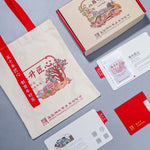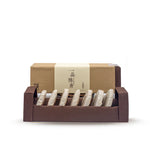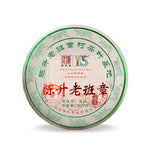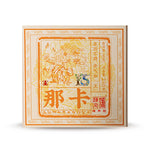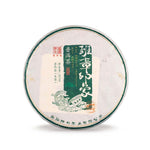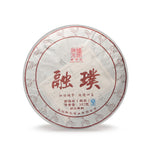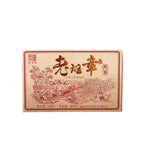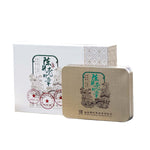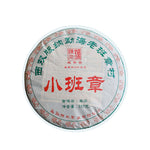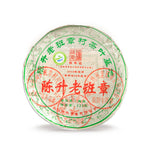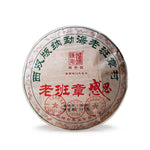Traditional vs. Modern Brewing Methods for Pu Erh Tea: Exploring Techniques and Tools
Pu erh tea is a treasure from China that offers a unique taste and rich history. It's fascinating to explore how Pu erh tea has been brewed over the years. Traditional brewing methods often involve careful rituals that enhance the tea-drinking experience. These methods carry cultural significance and connect us with centuries of tea traditions.
In contrast, modern brewing techniques provide more flexibility and convenience. Kitchen tools like the stovetop kettle teapot are great for brewing with ease and precision. Whether we're aiming for a time-honored ceremony or a quick and easy cup, both methods reveal different dimensions of Pu erh tea's charm.
From the slow and ceremonial preparation to the fast-paced modern style, each method offers unique insights and experiences. Understanding both methods allows us to decide how to enjoy our Pu Erh tea based on mood and setting.
Bestsellers
Key Takeaways
-
Traditional brewing honors the cultural roots of Pu erh tea.
-
Modern techniques offer convenience and speed.
-
Both methods enhance our appreciation of Pu erh tea.
The Rich History and Cultural Significance of Pu erh Tea
Pu erh tea holds a special place in our hearts, deeply tied to the culture and history of China. Its origins in Yunnan Province and significant role in Chinese tea culture make it a fascinating and cherished tea. Let's delve into its journey from traditional methods to modern practices.
Origins in Yunnan Province
Pu erh tea comes from Yunnan Province in China. This region, with its warm and humid climate, provides the perfect conditions for growing large-leaf tea trees, some of which are hundreds of years old. These trees contribute to the rich and complex flavor profile we enjoy in Pu erh.
Yunnan Province is known for its diverse ethnic groups, each bringing unique customs and traditions to tea production. The area’s long history of tea cultivation highlights the deep-rooted cultural practices that have shaped Pu erh tea. We can trace the local expertise and traditions that lend this tea its extraordinary reputation.
Pu erh Tea in Chinese Tea Culture
In Chinese tea culture, Pu erh holds a special place due to its unique characteristics and health benefits. It’s a fermented tea famous for its aging potential, which enhances its flavor over time. Many people consider drinking Pu erh tea not just a beverage choice but an experience reflecting harmony and respect.
We also see Pu erh featured in ceremonies like Gongfu Cha, where its preparation and enjoyment are as important as its taste. This tea offers a moment of peaceful reflection, emphasizing the cultural richness of Chinese traditions. The rituals around Pu erh tea connect us with history and encourage a deeper appreciation for the tea-making process.
Traditional Chinese Method Versus Western Method
Traditionally, the Chinese prepare Pu erh using the Gongfu Cha method, a meticulous and mindful process. We use small teapots, like Yixing clay pots, ensuring optimal flavor and aroma extraction. The ritual creates a relaxing and sensory-driven experience.
In contrast, modern Western methods often simplify the brewing process. We might use larger teapots or even electric kettles for convenience. While this method can save time, it doesn’t always capture the full essence of traditional methods.
Understanding Pu erh Tea
Pu erh tea, made from the Camellia sinensis plant, holds a unique place in the world of tea. Its distinct aging and fermentation process sets it apart from other teas. Let's explore how this tea differs in its raw and ripe forms, its fermentation process, and the various types of tea available.
Raw Versus Ripe Pu erh
Raw Pu Erh is often considered the more traditional form. It’s made with minimal oxidation, similar to green tea. When aged, it develops complex flavors. Raw Pu erh is usually aged for several years, enhancing its taste and aroma.
Lao Ban Zhang
Ripe Pu erh, on the other hand, undergoes a special fermentation process to accelerate aging. It has a rich, earthy flavor, more like black tea. Ripe Pu Erh is known for its deep color and mellow taste. People often prefer ripe Pu erh when they want a smoother, more immediate flavor without a lengthy aging process.
The Fermentation Process
The fermentation process is key to Pu erh tea's unique character. Raw Pu erh slowly ferments over time, allowing natural oxidation. This slow transformation enriches the tea with layers of taste. Aged tea lovers appreciate these dynamic changes.
Ripe Pu erh goes through a controlled, fast fermentation. This is akin to composting and lasts several weeks. This method gives the tea its rich flavors faster. We can notice how this impacts both taste and color compared to other types like black or oolong tea. These teas are prized for their complexity and depth.
Varieties of Tea
Pu erh is just one variety in the broad world of tea. It's essential to note how it compares to others like green, white, oolong, and black tea. Each type comes from the same plant but differs in making.
Green tea is famous for its freshness, while white tea is delicate. Oolong tea offers a middle ground, showing both freshness and oxidation. Black tea is fully oxidized, offering robust flavors.
Pu erh stands out because of its aging and fermentation. This creates a tea experience unlike any other, and as enthusiasts, we can truly appreciate these unique qualities.
Traditional Brewing Methods for Pu erh Tea
Pu erh tea has deep roots in Chinese culture and is traditionally prepared in ways that enhance its rich flavors. Two key aspects are the intricate Gongfu Cha Ceremony and specific brewing vessels that we use to heighten the tea's unique character.
The Gongfu Cha Ceremony
Gongfu Cha is more than just brewing tea—it's an art form. We follow a precise process that respects the tea leaves and brings out their best characteristics. Every step, from rinsing the leaves to timing the steeps is crucial.
This ceremony often starts with carefully measuring the leaves. Gaiwan or Yixing tea sets are popular choices for this ritual. We rinse the tea to "awaken" the leaves, pouring out the first brew. Then, we steep the tea multiple times, adjusting steep duration based on how the leaves open up. Each round brings out different flavors.
Using small tea cups allows us to savor every sip. It helps highlight nuanced aromas and tastes. In this way, the ceremony isn’t just about drinking tea but enjoying the process and its calming effects.
Brewing Vessels and Accessories
The right tools are essential for traditional brewing. We often use a gaiwan, which consists of a lid, bowl, and saucer. It's simple yet versatile, allowing us to control each step of brewing, from steeping time to pouring style.
The Yixing tea set is another classic choice. Made from porous clay, it retains heat well and absorbs tea flavors over time. This adds complexity to the taste, giving us a richer experience with every brew.
Traditional brewing isn't complete without fine tea cups. These small vessels help us focus on the tea’s aroma and taste, ensuring an enjoyable drinking session. Accessories like tea tongs and strainers are also useful, maintaining purity and clarity in our tea.
Modern Brewing Techniques for Pu erh Tea
In our exploration of modern brewing techniques for Pu erh tea, we look at the use of electric kettles and advanced tea infusers. We also examine Western adaptations that simplify the process while preserving flavor.
Electric Kettles and Advanced Tea Infusers
Electric kettles offer precision in heating water to the ideal temperature. Many come with thermostats, allowing us to choose the perfect heat setting for Pu erh tea. This ensures we don't scald the delicate leaves. We suggest using the top stove whistling tea kettle for its reliable performance and modern design.
Tea infusers and strainers are also crucial. They keep leaves separated, allowing proper water flow. Advanced infusers come in various shapes and sizes, ensuring a seamless brewing experience. These tools help us achieve a blend that is both rich and full-bodied. Choosing a good infuser ensures a smoother and more efficient process.
Western Brewing Adaptations
Western methods for brewing Pu erh tea often focus on convenience without sacrificing taste. Some of us might use larger cups for steeping, adjusting the tea-to-water ratio to customize our brew. This method is different from the traditional gongfu style but retains the tea's unique flavors.
Using a tea strainer or filter is common to remove any loose leaves while pouring. This adaptation allows us to enjoy Pu erh tea without needing specialized equipment. It highlights how flexible Pu erh brewing can be in modern settings.
The Science of Brewing Pu erh Tea
When we brew Pu erh tea, we need to pay close attention to factors like water temperature and steeping time. These elements impact the flavor and aroma of the tea, shaping our drinking experience.
Water Temperature and Its Effects
Water temperature is crucial when we brew Pu erh tea. If the water is too hot, it can make the tea taste bitter. If it's too cold, the flavors might not fully develop. Pu erh teas generally thrive with temperatures between 190°F and 212°F (88°C and 100°C).
When heated just right, the water brings out the rich, earthy flavors unique to Pu erh. We should also remember that different types of Pu erh require different temperatures. Raw Pu erh, for instance, may benefit from slightly cooler water compared to its ripe counterpart.
Control of Steeping Time and Leaf-to-Water Ratio
The steeping time affects the taste and strength of the tea. We need to adjust our timing based on the desired intensity. Shorter steeping times can result in a lighter brew, while longer times create a stronger flavor.
The leaf-to-water ratio is key, too. More leaves make for a robust brew, while fewer leaves create a milder drink. A general guideline might be 1 teaspoon of leaves per 6 ounces of water. Still, we should experiment to find our perfect balance.
Monitoring these factors helps us enjoy a Pu Erh tea that suits our taste preferences.
Health Benefits and Tasting Notes
When we enjoy Pu erh tea, we often notice both health benefits and distinct tasting notes. The tea supports weight management and is rich in antioxidants. Its unique flavor ranges from earthy to sweet, making each sip a delight.
The Weight Management Connection
Pu erh tea is often linked to weight management. Drinking Pu erh may support the body's metabolism. It can help in breaking down fats, which can be beneficial for weight loss routines. Although not a magic solution, including it in our diet can contribute to a healthier lifestyle.
The caffeine in Pu erh also plays a role. It can boost energy, helping us stay active throughout the day. A small cup after meals might assist in digestion and prevent us from overeating. This makes it a popular choice for those looking to maintain their weight.
Antioxidants and Other Health Benefits
Our interest in Pu erh tea often extends to its antioxidant properties. These compounds are known to protect our cells from damage. Regular consumption of Pu erh could potentially contribute to lowering cholesterol and even improving heart health.
Moreover, Pu erh tea may offer antimicrobial benefits, improving overall gut health. It's helpful in clearing toxins and enhancing digestion. As tea lovers, we appreciate how these elements contribute to feeling refreshed and vitalized.
The Flavor Profile of Pu erh Tea
Our experience with Pu erh tea is a journey of flavors. The tea is known for its distinct earthy taste. It's rich and complex, with a deep, grounded flavor that is unmatched by other teas. Some of us detect a slight sweetness or even a subtle umami finish.
During a tea tasting, we notice its smooth texture, often accompanied by a mellow aftertaste. It pairs well with a variety of dishes, making it a versatile choice for different times of the day. Whether hot or cold, Pu erh offers a diverse flavor profile that keeps us coming back for more.
Frequently Asked Questions
Pu erh tea is brewed in various ways, each providing a unique experience. Traditional methods focus on ceremonies, while modern techniques include innovative tools. Let's explore these aspects in more detail.
What is the traditional Chinese method for brewing Pu erh tea?
In traditional Chinese ceremonies, Pu erh tea is brewed using a gaiwan or Yixing teapot. The process involves rinsing the leaves first, then brewing multiple short infusions. This method highlights the tea's complexity and allows us to appreciate the evolving flavors with each steep.
Can you outline the Western approach to brewing Pu erh tea?
In the West, Pu erh tea is often brewed using a standard teapot or infuser. The leaves are typically steeped for a longer time in a larger quantity of water. This approach may result in a stronger brew and is convenient for those new to Pu erh tea.
What is the optimal amount of Pu erh tea to use per cup for a rich flavor?
Using about one teaspoon of Pu erh tea leaves per cup is ideal for a rich flavor. Adjusting this amount can help us find the perfect balance, as some prefer a more intense taste while others enjoy a milder flavor. Experimentation is key to discovering our preferred strength.
What are the ideal steeping times for Pu Erh tea to maximize its taste?
Steeping times for Pu erh tea vary depending on the method. In traditional brewing, each infusion lasts 10-30 seconds, while in Western practices, it might be 3-5 minutes. These times allow us to control the strength and bring out the best flavor of the tea.
How does the Top Stove Whistling Tea Kettle enhance modern Pu erh tea brewing?
The Top Stove Whistling Tea Kettle ensures precise water temperatures, crucial for modern brewing. This kettle boils water quickly and offers ease of use. Its design fits a modern kitchen, making it simple for us to brew Pu erh tea perfectly every time.
In what ways do traditional and modern brewing methods for Pu erh tea differ?
Traditional brewing highlights the cultural and ritual aspects of tea preparation, focusing on taste evolution over multiple infusions. Modern methods, on the other hand, emphasize convenience, using tools like the whistling kettle or infuser.
← Older post Newer post →

